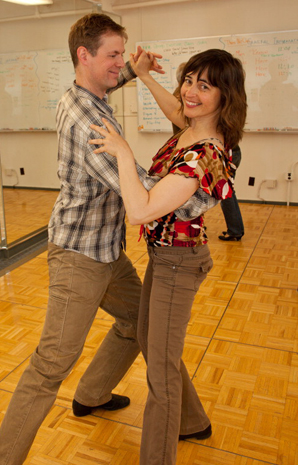Laura Mascio Kegelmeyer
Finding Her Own Beat

If Laura Mascio Kegelmeyer’s parents had simply stayed put, like generations before them, her life would likely have turned out quite differently. Laura’s parents, and several of her older siblings, hailed from a fairly remote village in central Italy. During World War II, the village was destroyed and the family lost many family members and friends. This spurred them to make the difficult move to the United States, where Laura and the rest of her siblings were born and raised, with new futures available to them. Had Laura instead been raised in the little Italian village, she almost certainly would not have been an engineer. She says, “Even here, as forward thinking as my mom was to make sure all of her kids went to college, I was not encouraged to go to graduate school!”"
Laura has surely proven the worth of advanced education to herself and her parents in the years since. Undaunted by tradition and lack of family precedent, she earned her bachelor’s degree from Boston University’s fledgling biomedical engineering program and her master’s from BU’s electrical engineering program. She then came to LLNL to study the physics of cells.
During her dozen years with LLNL’s biophysics program, she researched topics such as genetic abnormalities and DNA probe mapping. Her most high-profile achievement was creating one of the first algorithms for computer-aided diagnosis of mammograms, one that helped differentiate suspicious spots that were benign from those that were malignant. Developments such as this have helped lead to earlier diagnosis of breast cancer and fewer unnecessary biopsies. Laura’s expertise in biomedical image analysis caught the attention of NIF and Photon Science recruiters, and she was asked to join NIF in 2000.
Laura soon founded NIF’s automated optics inspection analysis effort—a project that is still going strong and adapting to the needs of a dynamic laser facility. Optics inspection involves looking for imperfections in NIF optics both on and off the NIF beamline. The idea is to quickly and efficiently distinguish sites of interest from irrelevant features using automated tools, and to register and track these sites from day to day. Recently the automated inspection effort has extended its scope to include target inspection—an effort to examine target capsules for surface particulates—and cryogenic fuel layer inspection, which aims to streamline analysis of, and eventually predict the quality of, the frozen fuel layer in NIF target capsules fairly early in the crystal growth process. In all cases, Laura and her team strive to give physicists the information they need to decide the best course of action—for example, when to refurbish a particular piece of laser glass, or whether a cryogenic target ice layer will likely meet the requisite quality standards for an upcoming experiment.
The work stays fresh because there is always a need for new capabilities. With NIF enhancements and new experiments come new requirements for Laura’s team, and so they continue to leverage and expand the inspection analysis tools. “For me, it’s a team experience,” Laura says,“ and it works because there is a generosity of spirit around here. It’s been very rare that anyone has said they don’t have time to contribute their expertise, despite being very busy. It’s amazing and I’m very grateful for the team, extended team, and the teamwork.”
Laura, too, is generous with her time. Nearly every summer, she mentors summer students—as many as seven. She enjoys working with students and is proud to note that one of her former interns now works at NIF as a staff scientist. To Laura, her efforts to support ignition at NIF and to inspire others to pursue the same line of work are her legacy—a way to help future generations address the clean energy challenge.
Outside of work, Laura and her husband can often be found hiking or dancing. The couple intended to take just a couple of lessons in preparation for their wedding dance, but those lessons turned into an avocation that has endured through more than a decade of marriage. Whether the tune is salsa or swing, rarely a week goes by in which Laura and her husband aren’t dancing to the beat.



